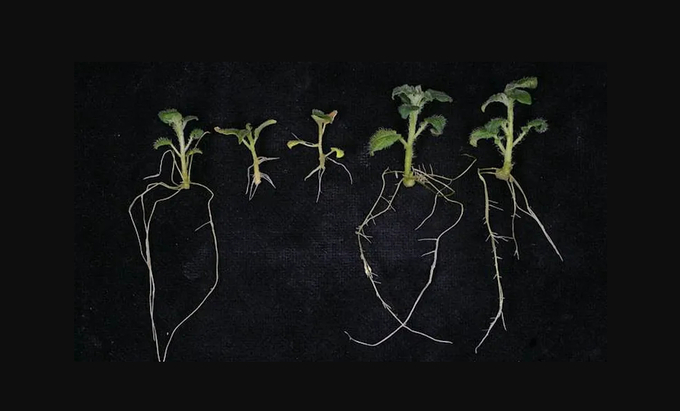November 28, 2025 | 02:55 GMT +7
November 28, 2025 | 02:55 GMT +7
Hotline: 0913.378.918
November 28, 2025 | 02:55 GMT +7
Hotline: 0913.378.918

In essence, the adaptation that makes the crop more growable makes it more dependent on nitrate fertilizers.
That is enhancing their crop's absorption of nitrogen while maintaining the genetic change that allows them to grow in all seasons.
ScienceNews contextualized the findings of a group of researchers in a study published in the New Phytologist journal.The problem the group hopes to address is cutting down on the crop's waste of nitrogen that occurs via excessive use of nitrate fertilizers. Not only is the use of fertilizer expensive for farmers, it can be damaging to the planet when rainfall causes it to pollute the soil, air, and water.
When the potato crop was taken from its native area in the Andes to Europe in the 1500s, it slowly adapted. In the Andes, winter was when the plant grew its tubers, per ScienceNews. Europe's harsher winters initially prevented the crop from taking off.
A genetic mutation in the gene StCDF1 eventually allowed the plant to grow in all seasons and become a global staple. However, the researchers in the study discovered that StCDF1 also strongly restricts an enzyme that facilitates the crop's nitrogen absorption.
In essence, the adaptation that makes the crop more growable makes it more dependent on nitrate fertilizers.
Salome Prat told ScienceNews the crop's poor nitrogen assimilation was a "problem," and noted "when it rains, this excess fertilizer goes to groundwaters, polluting them." That can be deadly for local fish.
To address the issue, the scientists tested if they could disable the StCDF1 gene to produce potatoes in an extremely low-nitrogen environment. While their potatoes didn't produce tubers, they grew bigger leaves and longer roots than conventional potato plants. They "looked happy," project researcher Maroof Ahmed Shaikh told ScienceNews.
That breakthrough opens up the possibility of using gene-editing to create a StCDF1-resistant enzyme that can absorb nitrogen at a much higher rate. The team conducted successful experiments demonstrating it is theoretically possible, calling it "a promising strategy."
Breeding potatoes with natural varieties that are less suppressed by StCDF1 is another potential solution.
The team's encouraging results are part of a concerted effort from scientists globally to cut down on nitrate fertilizer use.
Recently, a team at the University of Sheffield found rock dust can increase crop yields by up to 15%. Researchers at the University of Texas explored using a copper-based hydrogel that can help capture excess nitrogen. Meanwhile, other scientists are looking to optimize fertilizer production by using less synthetic ammonia that contributes to the warming of the planet.
Stephan Pollmann, a plant biologist not involved in the study, called the team's findings a "smasher" in comments to ScienceNews.
"If you can improve the nitrate assimilation … this is super important," he concluded.
(TCD)

(VAN) According to Mr. Vo Minh Thanh, Director of the Tay Ninh Department of Agriculture and Environment, Resolution 57 has created a new development pathway for the locality, shifting from traditional toward modern agriculture.
/2025/11/26/4909-2-154329_878.jpg)
(VAN) Pearl grouper farming in HDPE cages not only delivers economic efficiency but also contributes to protecting the environment, creating jobs, and promoting marine-based experiential tourism.

(VAN) The model of making a living under the forest canopy through the agroforestry system in Van Son commune, Bac Ninh province, is expected to generate an annual income of approximately VND 30 million/ha.

(VAN) Many enterprises in Can Tho are harnessing natural energy and reducing greenhouse gas emissions in their production processes, thereby contributing to the promotion of a sustainable green transition.
/2025/11/24/3536-2-112800_176.jpg)
(VAN) Dong Nai now has tens of thousands of hectares of forests certified for sustainable management, and this area will continue to be expanded in the coming period.

(VAN) Vinh Ha hamlet (Dai Xuyen commune, Hanoi) is shifting away from small-scale farming as households adopt bioscurity into their breeder chicken models.

(VAN) Heavy rains make aquatic species more vulnerable to disease. Proactive water management and high-tech systems help farmers prevent outbreaks and protect yields.